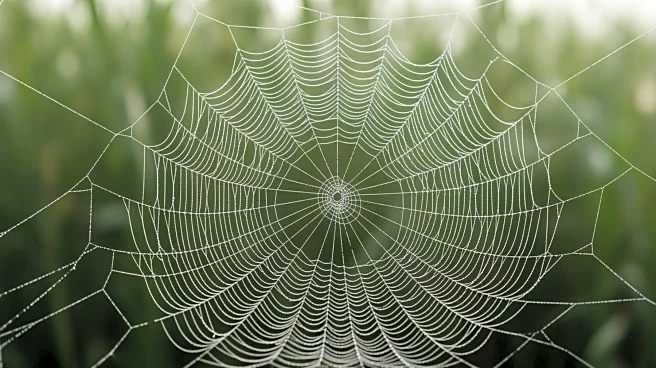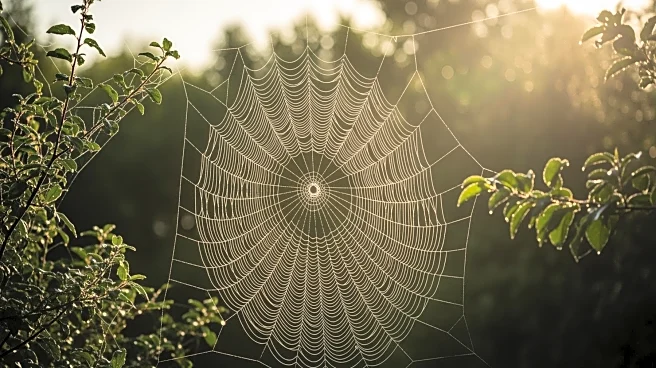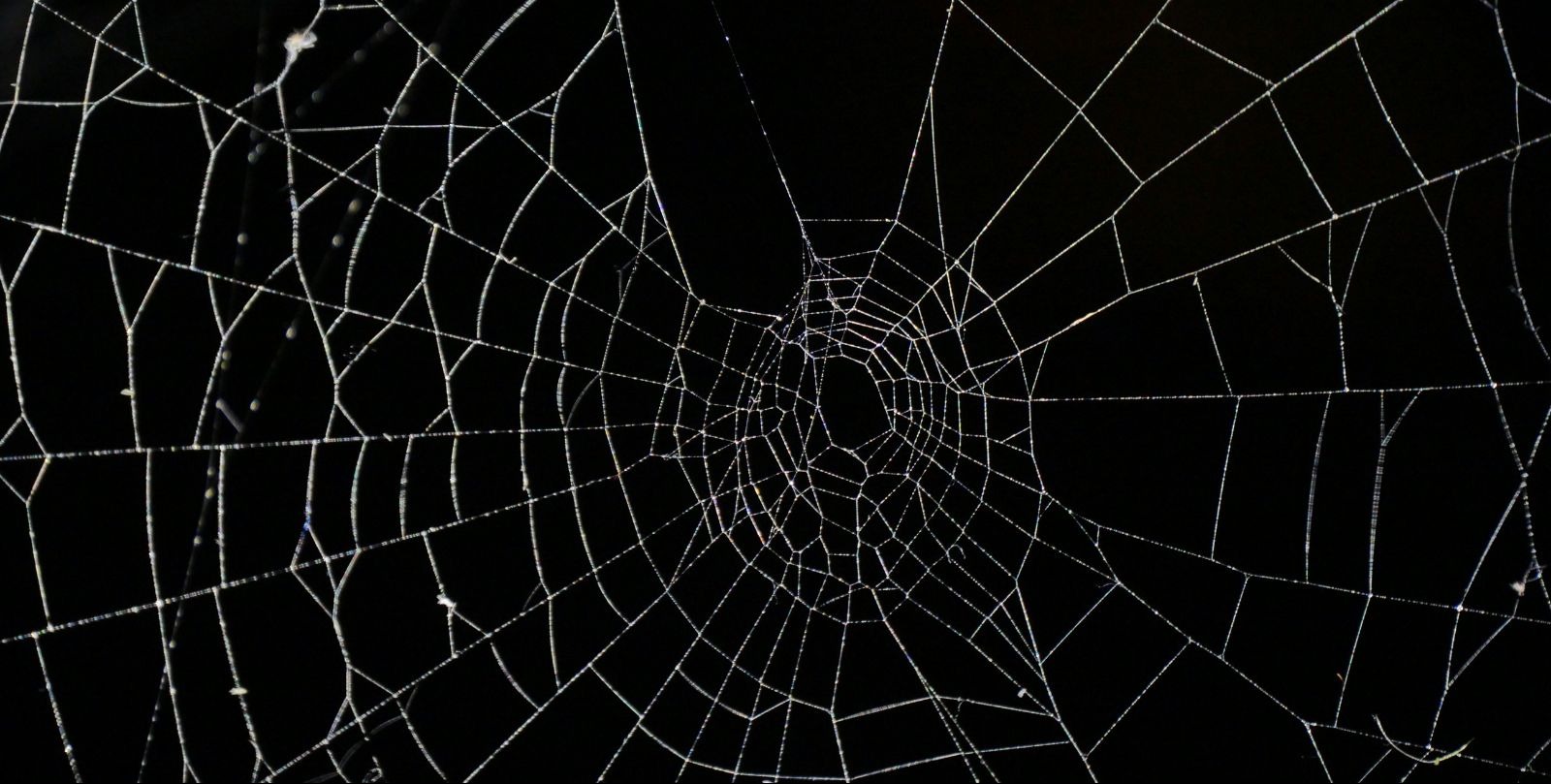What's Happening?
A study published in the journal Subterranean Biology has revealed the discovery of what is believed to be the world's largest spider web, located in a cave on the Albanian-Greek border. The web, measuring
1,140 square feet, houses approximately 110,000 spiders from two different species: Tegenaria domestica and Prinerigone vagans. This cohabitation is considered extremely rare, as spiders typically exhibit aggressive behavior towards each other. The cave environment, rich in sulfur and permanently dark, provides a unique setting where these species thrive alongside an estimated 2.4 million midge flies, offering a constant food source. Researchers are intrigued by the peaceful coexistence and are investigating the evolutionary and environmental factors that contribute to this phenomenon.
Why It's Important?
The discovery of this massive spider colony offers significant insights into arachnid behavior and evolution. Understanding how these spiders coexist peacefully could lead to broader implications for studying social behavior in other species. The presence of a stable food source and the unique cave environment may provide clues about how species adapt to specific ecological niches. This research could also inform conservation efforts, as the cave's ecosystem supports not only spiders but also large bat colonies. The findings may help scientists develop strategies to preserve such unique habitats and understand the dynamics of species interactions in isolated environments.
What's Next?
Further research is expected to delve into the genetic differences between the cave-dwelling spiders and their outdoor counterparts. Scientists aim to explore the evolutionary adaptations that allow these spiders to live in such large groups. Additionally, conservationists may focus on protecting the cave environment to ensure the continued survival of this unique spider colony. The study's findings could prompt additional investigations into similar ecosystems worldwide, potentially uncovering new species and behaviors. Researchers may also examine the implications of environmental changes on the delicate balance of this arachnid community.
Beyond the Headlines
The peaceful coexistence of these spider species in a cave environment challenges traditional views of arachnid behavior, which typically involves solitary and aggressive tendencies. This discovery raises questions about the potential for cooperative behavior among species in other contexts, possibly influencing future studies on social evolution. The cave's ecosystem, with its abundant food supply and lack of predators, provides a rare opportunity to observe natural selection and adaptation in action. The findings may also contribute to discussions on biodiversity and the importance of preserving unique habitats that support diverse life forms.













